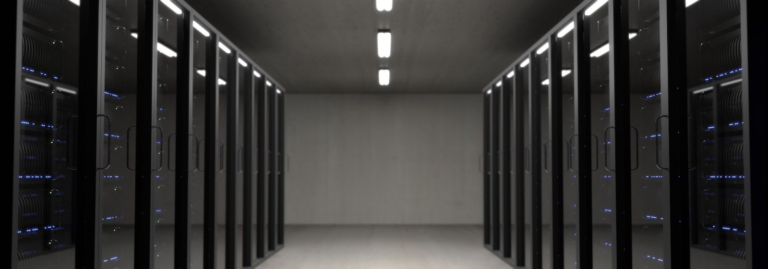The protection of sensitive information and the seamless functioning of businesses heavily rely on the establishment of secure server rooms. While server rooms may vary in appearance, they all share a common purpose as the central hub for software operations. Implementing robust security measures is essential to ensure the integrity and confidentiality of data stored within these critical spaces. Additionally, a critical component of keeping a server room running properly is attention to cleanliness, temperature control, and organization. By adopting a comprehensive approach to physical security and organization, businesses can fortify their server rooms against potential threats and safeguard their valuable assets.
The Vital Importance of a Clean, Cool, and Clutter-Free Server Room
Keeping server rooms clean, cool, and free from clutter is of utmost importance for businesses that rely on efficient data management and storage. Without a well-designed server room and constant upkeep, businesses may face disruptions in their operations and even complete downtime if the system fails.
There are a few best practices to keep in mind regarding your server room. First and foremost, the server room should be open, well-ventilated, and free from dust. Servers and other computer equipment generate significant heat, and inadequate ventilation or accumulating dust can lead to overheating and failures. It is crucial to provide ample room for the devices to “breathe” and incorporate regular dusting and maintenance access points to minimize dust accumulation. By ensuring proper ventilation and cooling, the risk of overheating can be significantly reduced.
Effective environmental controls and venting mechanisms should be integrated into the server room design to maintain a suitable temperature. Various accessories available on the market can facilitate cooling, such as raised floors, self-cooling cabinetry, and in-row cooling systems. By investing in these solutions, businesses can further enhance the cooling efficiency of their server rooms, reducing the risk of equipment failures caused by excessive heat.
One risk to think about is a fire in the server room. Fire suppression systems are vital for protecting server rooms from accidents and electrical fires. Despite precautions, there is always a risk of the server overheating. Smoke detection systems can quickly alert and suppress fires, minimizing damage to servers and sensitive data. Ensuring the appropriate fire extinguisher is available in the room is essential, as different types of extinguishers are suitable for different fire types.
Lastly, proper and efficient routing of wires and cables is another crucial aspect of server room best practices. Cluttered and disorganized wires pose a safety hazard and increase the risk of accidental damage or disruption. Implementing appropriate pathways for cables and connections, along with precise mapping and labeling, helps IT technicians easily identify and access trouble spots. This organized approach not only improves maintenance efficiency but also reduces the likelihood of accidents or unplanned downtime caused by the mishandling of cables.
All in all, maintaining a clean, cool, and clutter-free server room is paramount for businesses reliant on efficient data management and uninterrupted operations. By adhering to best practices for server room upkeep, including proper ventilation, cooling systems, redundant power supply, and efficient cable management, businesses can ensure that their equipment operates optimally, reducing the risk of failures and downtime that can adversely affect their operations.
Safeguarding the Central Hub of Operations
The protection of sensitive information and the seamless functioning of businesses heavily rely on the establishment of secure server rooms. While server rooms may vary in appearance, they all share common characteristics as the central hub for software operations. Implementing robust security measures is essential to ensure the integrity and confidentiality of data stored within these critical spaces.
There are several best practices for securing a server room. For starters, restricting access to the server room is crucial for physical security. Each individual should have their own access code or card for entry. By ensuring the room is always locked and accessible only to authorized personnel, the risk of unauthorized access is minimized. Pin codes or access cards can limit the number of people with entry permissions, enhancing security.
Motion sensors serve as an additional layer of security by alerting the appropriate personnel when someone enters the server room. The sensors can trigger lights to turn on, allowing security to verify if the person has the necessary access levels. In case of any violation, motion sensors record movement data for further analysis, aiding in identifying potential security breaches. This coupled with video surveillance can be beneficial in protecting the server room.
Also, a robust data backup strategy is crucial to mitigate the risk of data loss. Regularly backing up data ensures that in the event of an emergency, essential files and folders can be restored. Online and remote backup solutions offer encrypted storage accessible from remote locations, providing added security. Backing up information at least once a day, or more frequently if possible, is recommended, especially for sensitive data sets.
By implementing these physical security practices, businesses can enhance the protection of their server rooms and safeguard critical data. It is crucial to prioritize both physical and digital security when relying heavily on the stored data in server rooms.
Partnering for Server Room Excellence: Discover How vTECH io Can Safeguard Your Data
Overall, the importance of server rooms cannot be overstated, as they form the backbone of an organization’s digital infrastructure. By adhering to best practices in server room design and management, businesses can ensure the uninterrupted operations of their systems, mitigate the risk of data loss or breaches, and protect their valuable assets. A well-designed server room with proper ventilation, cooling systems, redundant power supply, and efficient cable management helps maintain optimal performance and minimize downtime. Additionally, implementing robust security measures fortifies the server room against potential threats and safeguards sensitive information.
At vTECH io, our extensive knowledge and experience can help you implement the best practices in physical security and data protection. Don’t wait for a security breach or downtime to occur – contact vTECH io now to learn more about how our solutions can keep your server room safe and secure.

